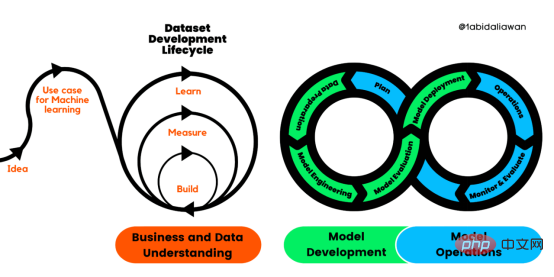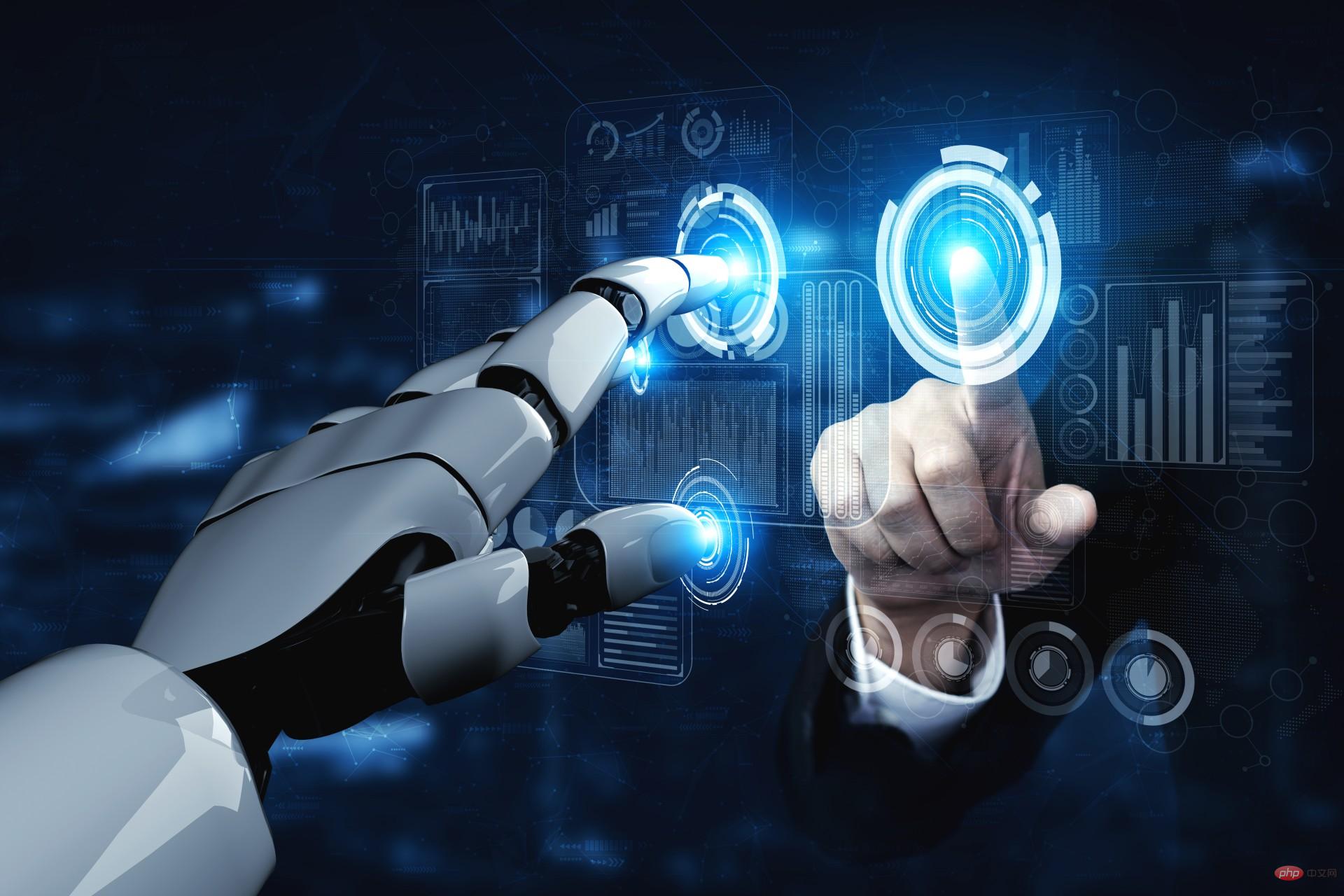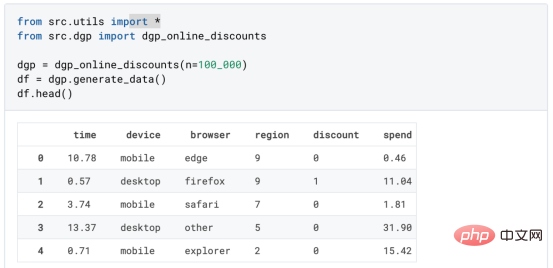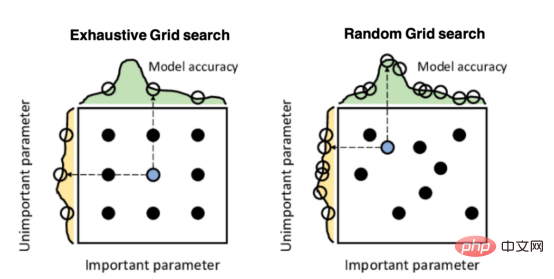
Automatic Machine Learning (AutoML) is a game changer in the field of machine learning. It can automatically select and optimize algorithms, making the process of training machine learning models simpler and more efficient. Even if you have no machine learning experience, you can easily train a model with excellent performance with the help of AutoML.
AutoML provides an interpretable AI approach to enhance model interpretability. This way, data scientists can gain insights into the model’s prediction process. This is particularly useful in the fields of healthcare, finance, and autonomous systems. It can help identify biases in data and prevent incorrect predictions.
AutoML leverages machine learning to solve real-world problems, including tasks such as algorithm selection, hyperparameter optimization, and feature engineering. Here are some commonly used methods:
Neural Architecture Search (NAS): This method uses a search algorithm to automatically find the best neural network architecture for a given task and data set.
Bayesian Optimization: This method uses a probabilistic model to guide the search for the best set of hyperparameters for a given model and data set.
Evolutionary algorithm: This method uses evolutionary algorithms such as genetic algorithm or particle swarm optimization to search for the best set of model hyperparameters.
Gradient-based method: This method uses gradient-based optimization techniques such as gradient descent and Adam to optimize model hyperparameters.
Transfer learning is a method that uses pre-trained models to fine-tune on similar tasks or data sets to adapt to the target task and data set.
Ensemble method: This method combines multiple models to create a more robust and accurate final model.
Multi-modal approach: This approach uses multiple data modalities such as images, text, and audio to train the model and improve performance.
Meta-learning: This method uses a model to learn how to learn from data, which can improve the efficiency of the model selection process.
Small sample learning/zero sample learning: This method can learn to recognize new classes from one or a few examples.
Advantages of AutoML
AutoML simplifies the machine learning process and brings many benefits, some of which are as follows:
1. Save time: Automate model selection and hyperparameters The tuning process can save data scientists and machine learning engineers a lot of time.
2. Accessibility: AutoML allows users with little or no machine learning experience to train high-performance models.
3. Improve performance: AutoML methods can often find better model architecture and hyperparameter settings than manual methods, thereby improving model performance.
4. Handle large amounts of data: AutoML can handle large amounts of data and even find the best model with more features.
5. Scalability: AutoML can scale to large data sets and complex models, making it ideal for big data and high-performance computing environments.
6. Versatility: AutoML can be used in a variety of industries and applications, including healthcare, finance, retail, and transportation.
7. Cost-effective: AutoML can save resources and money in the long run by reducing the need for manual labor and expertise.
8. Reduce the risk of human error: Automating the model selection and hyperparameter tuning process can reduce the risk of human error and increase the reproducibility of results.
9. Improve efficiency: AutoML can be integrated with other tools and processes to increase the efficiency of data pipelines.
10. Handle multiple data modes: AutoML can handle multiple data modes, such as images, text, and audio, to train models and improve performance.
Disadvantages of AutoML
AutoML also has certain limitations, as follows:
1. Limited control over the model selection and hyperparameter adjustment process: AutoML methods are based on predefined algorithms and setup runs, the user may have limited control over the final model.
2. Limited interpretability of generated models: AutoML methods can be opaque, making it difficult to understand how the model makes predictions.
3. More expensive than manually designing and training models: AutoML tools and infrastructure can be costly to implement and maintain.
4. Difficulty integrating domain-specific knowledge into the model: AutoML relies on data and predefined algorithms, which is less efficient when integrating domain-specific knowledge.
5. May perform poorly on edge cases or unusual data distributions: AutoML methods may perform poorly on data that is significantly different from the training data.
6. Limited support for certain models or tasks: AutoML methods may not be suitable for all models or tasks.
7. Dependence on large amounts of labeled data: AutoML methods often require large amounts of labeled data to effectively train models.
8. Limited ability to handle data with missing values or errors: AutoML methods may not handle data with missing values or errors well.
9. Limited ability to explain model predictions and decisions: AutoML methods can be opaque, making it difficult to understand how the model makes predictions, which can be a problem for some applications and industries.
10. Overfitting: If not monitored properly, AutoML methods can lead to overfitting to training data, which can lead to poor performance on new unseen data.
Overall, AutoML is a powerful tool for automating the machine learning process, but it also has its limitations.
The above is the detailed content of Automatic learning machine (AutoML). For more information, please follow other related articles on the PHP Chinese website!
 解读CRISP-ML(Q):机器学习生命周期流程Apr 08, 2023 pm 01:21 PM
解读CRISP-ML(Q):机器学习生命周期流程Apr 08, 2023 pm 01:21 PM译者 | 布加迪审校 | 孙淑娟目前,没有用于构建和管理机器学习(ML)应用程序的标准实践。机器学习项目组织得不好,缺乏可重复性,而且从长远来看容易彻底失败。因此,我们需要一套流程来帮助自己在整个机器学习生命周期中保持质量、可持续性、稳健性和成本管理。图1. 机器学习开发生命周期流程使用质量保证方法开发机器学习应用程序的跨行业标准流程(CRISP-ML(Q))是CRISP-DM的升级版,以确保机器学习产品的质量。CRISP-ML(Q)有六个单独的阶段:1. 业务和数据理解2. 数据准备3. 模型
 2023年机器学习的十大概念和技术Apr 04, 2023 pm 12:30 PM
2023年机器学习的十大概念和技术Apr 04, 2023 pm 12:30 PM机器学习是一个不断发展的学科,一直在创造新的想法和技术。本文罗列了2023年机器学习的十大概念和技术。 本文罗列了2023年机器学习的十大概念和技术。2023年机器学习的十大概念和技术是一个教计算机从数据中学习的过程,无需明确的编程。机器学习是一个不断发展的学科,一直在创造新的想法和技术。为了保持领先,数据科学家应该关注其中一些网站,以跟上最新的发展。这将有助于了解机器学习中的技术如何在实践中使用,并为自己的业务或工作领域中的可能应用提供想法。2023年机器学习的十大概念和技术:1. 深度神经网
 基于因果森林算法的决策定位应用Apr 08, 2023 am 11:21 AM
基于因果森林算法的决策定位应用Apr 08, 2023 am 11:21 AM译者 | 朱先忠审校 | 孙淑娟在我之前的博客中,我们已经了解了如何使用因果树来评估政策的异质处理效应。如果你还没有阅读过,我建议你在阅读本文前先读一遍,因为我们在本文中认为你已经了解了此文中的部分与本文相关的内容。为什么是异质处理效应(HTE:heterogenous treatment effects)呢?首先,对异质处理效应的估计允许我们根据它们的预期结果(疾病、公司收入、客户满意度等)选择提供处理(药物、广告、产品等)的用户(患者、用户、客户等)。换句话说,估计HTE有助于我
 使用PyTorch进行小样本学习的图像分类Apr 09, 2023 am 10:51 AM
使用PyTorch进行小样本学习的图像分类Apr 09, 2023 am 10:51 AM近年来,基于深度学习的模型在目标检测和图像识别等任务中表现出色。像ImageNet这样具有挑战性的图像分类数据集,包含1000种不同的对象分类,现在一些模型已经超过了人类水平上。但是这些模型依赖于监督训练流程,标记训练数据的可用性对它们有重大影响,并且模型能够检测到的类别也仅限于它们接受训练的类。由于在训练过程中没有足够的标记图像用于所有类,这些模型在现实环境中可能不太有用。并且我们希望的模型能够识别它在训练期间没有见到过的类,因为几乎不可能在所有潜在对象的图像上进行训练。我们将从几个样本中学习
 LazyPredict:为你选择最佳ML模型!Apr 06, 2023 pm 08:45 PM
LazyPredict:为你选择最佳ML模型!Apr 06, 2023 pm 08:45 PM本文讨论使用LazyPredict来创建简单的ML模型。LazyPredict创建机器学习模型的特点是不需要大量的代码,同时在不修改参数的情况下进行多模型拟合,从而在众多模型中选出性能最佳的一个。 摘要本文讨论使用LazyPredict来创建简单的ML模型。LazyPredict创建机器学习模型的特点是不需要大量的代码,同时在不修改参数的情况下进行多模型拟合,从而在众多模型中选出性能最佳的一个。本文包括的内容如下:简介LazyPredict模块的安装在分类模型中实施LazyPredict
 Mango:基于Python环境的贝叶斯优化新方法Apr 08, 2023 pm 12:44 PM
Mango:基于Python环境的贝叶斯优化新方法Apr 08, 2023 pm 12:44 PM译者 | 朱先忠审校 | 孙淑娟引言模型超参数(或模型设置)的优化可能是训练机器学习算法中最重要的一步,因为它可以找到最小化模型损失函数的最佳参数。这一步对于构建不易过拟合的泛化模型也是必不可少的。优化模型超参数的最著名技术是穷举网格搜索和随机网格搜索。在第一种方法中,搜索空间被定义为跨越每个模型超参数的域的网格。通过在网格的每个点上训练模型来获得最优超参数。尽管网格搜索非常容易实现,但它在计算上变得昂贵,尤其是当要优化的变量数量很大时。另一方面,随机网格搜索是一种更快的优化方法,可以提供更好的
 超参数优化比较之网格搜索、随机搜索和贝叶斯优化Apr 04, 2023 pm 12:05 PM
超参数优化比较之网格搜索、随机搜索和贝叶斯优化Apr 04, 2023 pm 12:05 PM本文将详细介绍用来提高机器学习效果的最常见的超参数优化方法。 译者 | 朱先忠审校 | 孙淑娟简介通常,在尝试改进机器学习模型时,人们首先想到的解决方案是添加更多的训练数据。额外的数据通常是有帮助(在某些情况下除外)的,但生成高质量的数据可能非常昂贵。通过使用现有数据获得最佳模型性能,超参数优化可以节省我们的时间和资源。顾名思义,超参数优化是为机器学习模型确定最佳超参数组合以满足优化函数(即,给定研究中的数据集,最大化模型的性能)的过程。换句话说,每个模型都会提供多个有关选项的调整“按钮
 人工智能自动获取知识和技能,实现自我完善的过程是什么Aug 24, 2022 am 11:57 AM
人工智能自动获取知识和技能,实现自我完善的过程是什么Aug 24, 2022 am 11:57 AM实现自我完善的过程是“机器学习”。机器学习是人工智能核心,是使计算机具有智能的根本途径;它使计算机能模拟人的学习行为,自动地通过学习来获取知识和技能,不断改善性能,实现自我完善。机器学习主要研究三方面问题:1、学习机理,人类获取知识、技能和抽象概念的天赋能力;2、学习方法,对生物学习机理进行简化的基础上,用计算的方法进行再现;3、学习系统,能够在一定程度上实现机器学习的系统。


Hot AI Tools

Undresser.AI Undress
AI-powered app for creating realistic nude photos

AI Clothes Remover
Online AI tool for removing clothes from photos.

Undress AI Tool
Undress images for free

Clothoff.io
AI clothes remover

AI Hentai Generator
Generate AI Hentai for free.

Hot Article

Hot Tools

SublimeText3 English version
Recommended: Win version, supports code prompts!

SAP NetWeaver Server Adapter for Eclipse
Integrate Eclipse with SAP NetWeaver application server.

WebStorm Mac version
Useful JavaScript development tools

SublimeText3 Linux new version
SublimeText3 Linux latest version

MinGW - Minimalist GNU for Windows
This project is in the process of being migrated to osdn.net/projects/mingw, you can continue to follow us there. MinGW: A native Windows port of the GNU Compiler Collection (GCC), freely distributable import libraries and header files for building native Windows applications; includes extensions to the MSVC runtime to support C99 functionality. All MinGW software can run on 64-bit Windows platforms.







